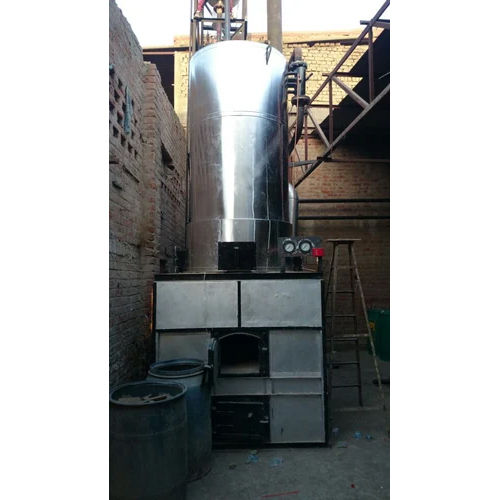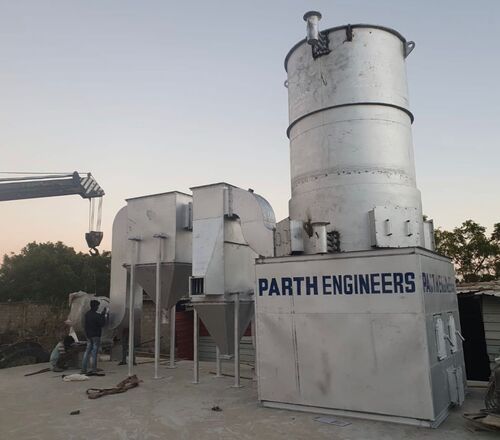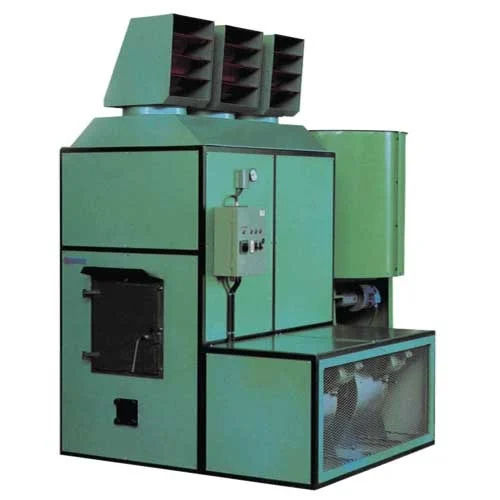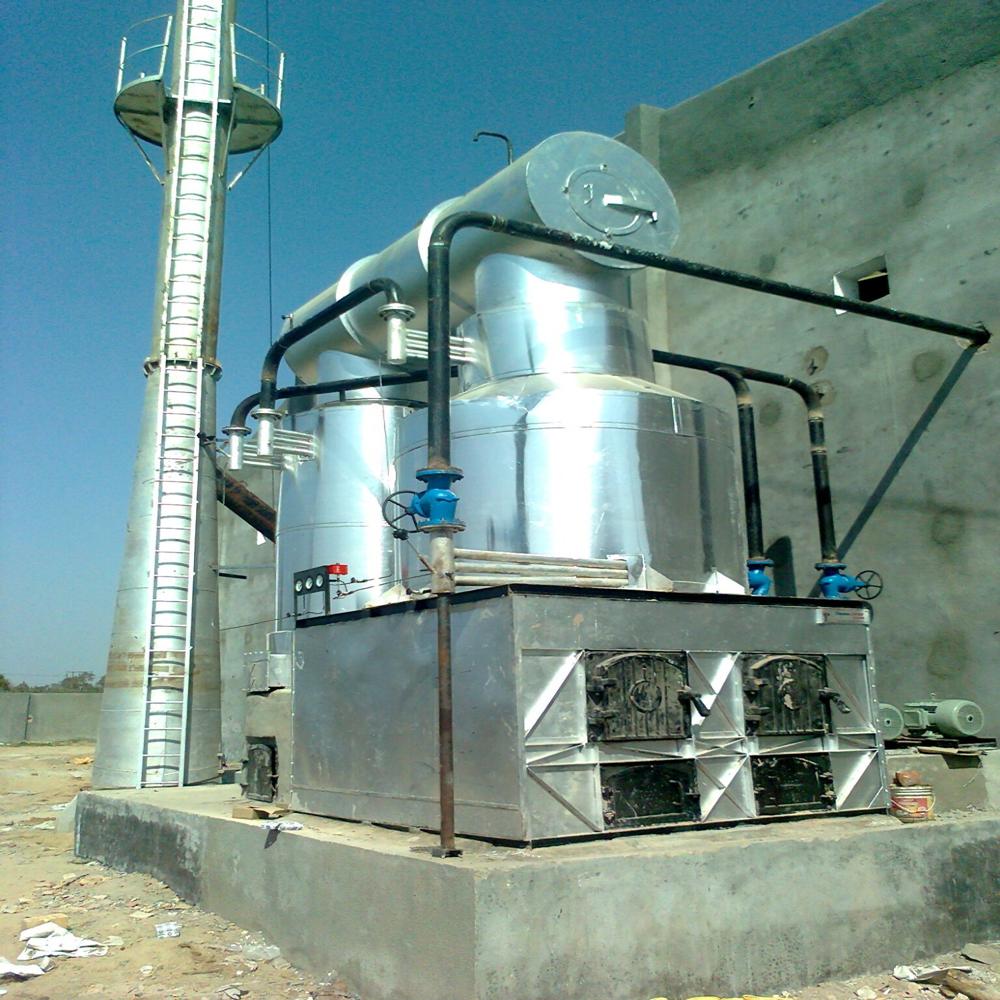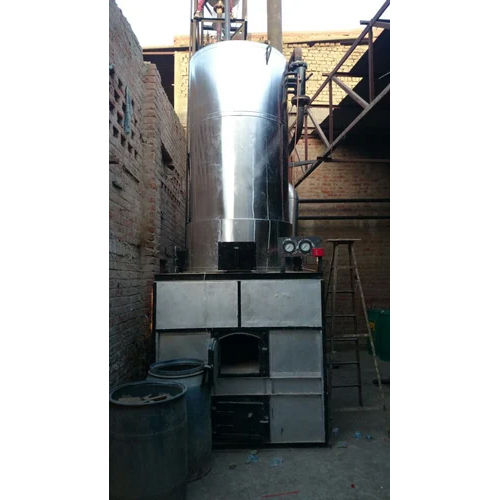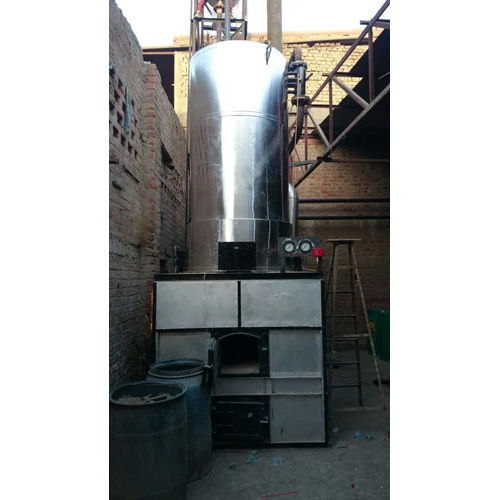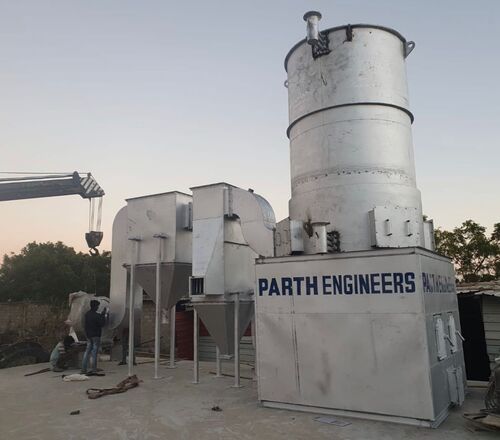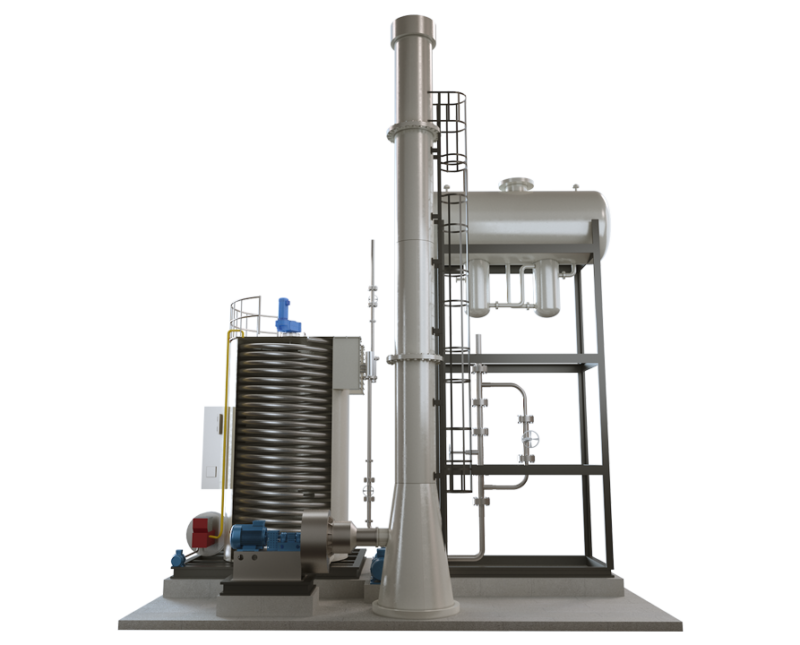|
wood Fired Thermic Fluid Heater
Product Details:
wood Fired Thermic Fluid Heater Price And Quantity
- 920000 INR/Piece
- 1 Piece
Product Description
A Wood Fired Thermic Fluid Heater is an industrial heating system that uses wood as a fuel source to heat a thermal fluid, which then provides heat to various industrial processes. These heaters are an eco-friendly alternative to oil and gas-fired heaters, as they utilize renewable biomass fuel, such as wood chips, sawdust, or wood pellets. The system operates by burning wood in a combustion chamber to generate heat, which is transferred to a thermal fluid that circulates through the system and transfers the heat to the required process.
Key Features of a Wood Fired Thermic Fluid Heater:
-
Wood as Fuel: This type of heater uses wood or wood-based products, such as chips, pellets, or sawdust, as fuel. Biomass fuel is considered a renewable energy source and is more environmentally friendly than fossil fuels.
-
Thermic Fluid: A specially designed thermal fluid, often a heat-transfer oil or water-based fluid, is used to absorb heat from the combustion process. This fluid circulates through the system, transferring heat to the desired process or application.
-
Combustion Chamber: The wood is burned in a combustion chamber, where it releases heat. The combustion process is optimized to ensure efficient burning, minimizing fuel consumption and reducing emissions.
-
Heat Exchanger: The heat generated from burning wood is transferred to the thermal fluid via a heat exchanger. The fluid absorbs the heat and circulates through a system of pipes or tubes to deliver heat to various industrial processes.
-
Air Supply & Flue Gas System: Proper air supply ensures complete combustion of the wood. The flue gas system carries away the combustion gases, which can be treated with air pollution control devices (like dust collectors or scrubbers) to minimize emissions.
-
Automatic Controls: Modern wood-fired thermic fluid heaters are equipped with advanced control systems to regulate fuel input, airflow, temperature, and fluid circulation, ensuring optimal performance and energy efficiency.
-
Safety Features: These heaters are typically equipped with safety mechanisms, such as pressure relief valves, flame detectors, temperature and pressure sensors, and low-water cutoffs, to ensure safe and reliable operation.
Working Principle:
-
Fuel Combustion: Wood is fed into the combustion chamber, where it is ignited. The combustion process generates heat, which is absorbed by the combustion gases.
-
Heat Transfer to Thermal Fluid: The heat from the combustion gases is transferred to the thermal fluid circulating through the heat exchanger. This thermal fluid then carries the heat to various heat exchangers or process areas where heating is required.
-
Circulation of Fluid: The thermal fluid, which is heated to high temperatures, circulates through a closed loop, delivering heat to the required processes, such as drying, heating, or chemical reactions.
-
Exhaust Gas Handling: The flue gases generated during combustion are directed through a flue gas system and are usually released into the atmosphere after passing through pollution control devices to minimize environmental impact.
-
Return of Cooled Fluid: After transferring its heat, the cooled thermal fluid returns to the heater, where it is reheated by the combustion process, continuing the cycle.
Applications of Wood Fired Thermic Fluid Heaters:
Wood Fired Thermic Fluid Heaters are suitable for industries that require high temperatures for heating and processing, such as:
-
Textile Industry: Used in dyeing, finishing, and drying processes.
-
Food Processing: Provides heat for cooking, drying, and sterilization.
-
Chemical and Petrochemical Industries: For heating reactors, distillation columns, and other high-temperature processes.
-
Paper and Pulp: Used in drying paper or processing materials.
-
Rubber and Plastics: Heating for molding and extrusion processes.
-
Wood and Lumber Processing: Drying of timber or wood-based products.
Advantages of Wood Fired Thermic Fluid Heaters:
-
Renewable Fuel Source: Wood is a renewable biomass resource, making this type of heater more environmentally friendly compared to fossil fuel-based heaters.
-
Reduced Carbon Footprint: The combustion of wood releases carbon dioxide (CO), but since wood is part of the natural carbon cycle, it is considered a carbon-neutral source of energy.
-
Cost-Effective: Wood fuel is often more cost-effective than oil, gas, or electricity, especially in areas where wood is abundant and inexpensive.
-
High Efficiency: Wood Fired Thermic Fluid Heaters are designed to efficiently transfer heat to the thermal fluid, maximizing energy use and reducing fuel consumption.
-
Lower Emissions: Modern designs include systems for better combustion, which reduce the emissions of particulate matter, carbon monoxide (CO), and other pollutants.
-
Versatility: These heaters can be designed to handle a wide range of wood-based fuels, including wood chips, sawdust, and wood pellets, giving flexibility in fuel selection.
Maintenance Considerations:
-
Wood Quality: The quality of the wood used as fuel can impact combustion efficiency and overall performance. Wet or green wood may reduce efficiency, while dry, well-seasoned wood burns more efficiently.
-
Ash and Soot Build-up: Regular cleaning of the combustion chamber, heat exchanger, and flue gas system is necessary to remove ash, soot, and other residues from combustion. This helps maintain heat transfer efficiency and prolongs the life of the system.
-
Wood Feeding System: The automatic feeding system for wood should be regularly checked and maintained to ensure smooth fuel delivery.
-
Air Supply and Combustion Control: Ensuring proper air-to-fuel ratio is critical for efficient and complete combustion. Regular maintenance and calibration of the air supply system and burner controls are important for optimal performance.
Safety Features:
-
Automatic Shut-Off: The system typically includes an automatic shut-off function in case of a malfunction or safety hazard.
-
Over-temperature Protection: Temperature sensors and pressure relief valves are used to prevent overheating and to maintain safe operating conditions.
-
Smoke and Emission Control: Flue gas treatment systems such as dust collectors or scrubbers may be included to reduce emissions and improve environmental performance.

Price:
- 50
- 100
- 200
- 250
- 500
- 1000+
Other Products in 'Thermic Fluid Heater' category
 |
Parth Engineers
All Rights Reserved.(Terms of Use) Developed and Managed by Infocom Network Private Limited. |



